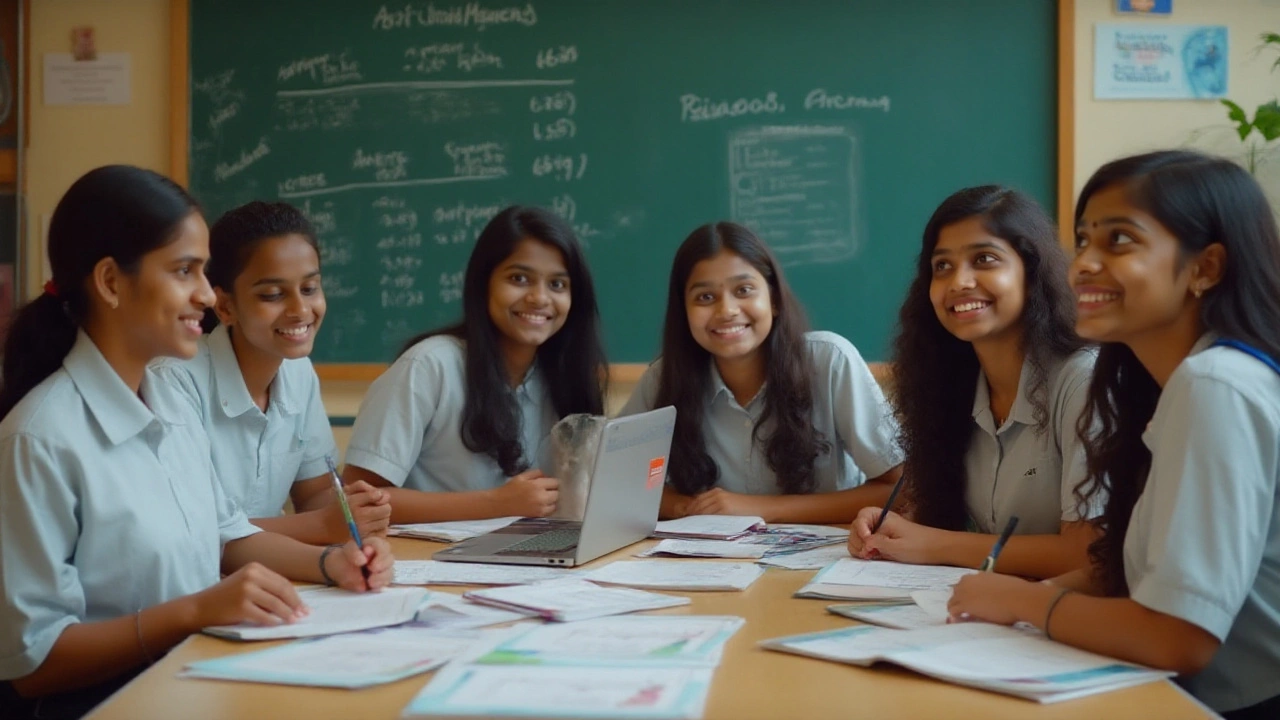PSAT Score for National Merit: What Qualifies You in 2025

Imagine sitting down for the PSAT, nervously sharpening your pencils, heart thumping a little too hard. What if this one test, barely over two hours long, decides if you’re among the top high schoolers in the nation? Every year, thousands grind through this moment, knowing that their PSAT score could mean not just bragging rights, but real scholarship money—and a big boost for their future. But here’s where parents and students hit a wall: What PSAT score actually qualifies for National Merit? There’s no easy answer. The line is fuzzy, mysterious, and honestly, pretty frustrating. Let’s dig in and peel back the mystery.
How the PSAT and National Merit Program Really Work
Alright, here’s the scoop. The PSAT/NMSQT, officially called the Preliminary SAT/National Merit Scholarship Qualifying Test, isn’t just practice for the SAT—it’s the official entry point for the National Merit Scholarship Program. Only high school juniors (Year 11 in Australia terms) can use their score from this test to qualify for National Merit. Sophomores who take the test are just getting a sneak peek; their scores don’t count for the big prize.
Each October, students across the U.S. (and even U.S. citizens studying abroad) sit for the PSAT/NMSQT. The test is broken into three parts: Reading, Writing & Language, and Math. The highest possible PSAT score is 1520, split between two sections: 760 for Evidence-Based Reading and Writing, and 760 for Math. But here’s the twist: National Merit doesn’t use this total score to decide who qualifies. Instead, it calculates something called the “Selection Index.”
Why the Selection Index? Because the National Merit program wants to weigh English skills a bit more. They add your Reading, Writing, and Math section test scores (each out of 38), double that sum, and get your Selection Index. So, say you get 35 in Reading, 36 in Writing, and 38 in Math. Add those (35+36+38) = 109. Then double it: 109 x 2 = 218. That’s your Selection Index, and it’s the magic number for National Merit. The maximum Selection Index is 228.
But getting a high Selection Index isn’t the only requirement. To even be considered, you need to be a U.S. citizen or lawful permanent resident, be enrolled as a high school student planning to graduate as part of the normal progression, and plan to enrol in college full time in the fall after you graduate. It has to be your first time as a junior, not a repeat performance.
Every year, about 3.6 million students take the PSAT/NMSQT, but only the top 50,000 scorers (based on their Selection Index) are notified in April after the test. Out of those, roughly 16,000 (that’s less than half a percent!) get called Semifinalists in September. Becoming a Semifinalist is the first big hurdle to eventually bagging a National Merit Scholarship.
Spoiler alert: Even being a high scorer doesn’t guarantee anything. If you live in a more competitive state, your cutoff could be much higher than in a less competitive one. And every year, the exact cutoffs move up and down depending on how well everyone does on a particular year’s test. The only way to find out is to look at real numbers.

Cutoff Scores by State: The Numbers They Don’t Want to Tell You
This is the part that always makes people antsy. No, the National Merit cutoff isn’t one single number for the entire country. Each state gets its own cutoff, reflecting where students performed the best. The most competitive states—think Massachusetts, New Jersey, Maryland, Washington, California—have the highest cutoffs, always brushing up against the maximum. States with fewer test-takers or less competition dip much lower.
For juniors testing in the fall of 2024 (Class of 2026), here’s a table of real-world predicted National Merit PSAT cutoff scores by state. The official numbers for 2025 won’t be released until September, but years of patterns point to these as good estimates (Selection Index):
| State | Predicted Cutoff (2024-2025) |
|---|---|
| California | 222 |
| Texas | 220 |
| Florida | 216 |
| Illinois | 220 |
| New York | 220 |
| Maryland | 223 |
| New Jersey | 223 |
| Massachusetts | 223 |
| North Dakota | 207 |
| Wyoming | 207 |
| Montana | 208 |
| Alabama | 213 |
| Georgia | 219 |
Notice the massive spread—from 207 up to 223. So a student in Wyoming could get a 210 Selection Index and be a National Merit Semifinalist. But in New Jersey, that same score would fall short. No wonder families trade stories on online college forums—everyone wants to know where the threshold sits and how to jump over it.
Why do these cutoffs jump around each year? It’s all about percentiles. The National Merit program aims to recognize the top 1% of students in each state. So, if more students in a state suddenly ace the test, the cutoff climbs. In rare years with harder tests, or lower overall scores, the cutoffs drop by a point or two. It’s a moving target—sometimes infuriating for those pinning their future on hitting a specific number.
If you’re not sure how your score stacks up, check out the percentiles sent with your PSAT/NMSQT Score Report. Hitting the 99th percentile is usually solid for National Merit, but in tough states, you may need to push even higher—sometimes all the way to 223 out of 228 for the Selection Index. That’s serious competition.
What about commended students—the ones who almost make it? The National Merit Commended cutoff sits lower, usually about 207-210, depending on the year. Commended status won’t put you in the running for scholarships, but it’s still a solid achievement to list on future applications and resumes.
One myth that refuses to die is the idea that SAT or ACT scores matter for National Merit qualification. They only matter after you’ve made it to Semifinalist status and then apply for Finalist consideration, where you’ll need to confirm your PSAT prowess with strong SAT or ACT results. Upfront, it’s just that Selection Index.
Here’s another curveball: not all scholarships hang on the National Merit program. Plenty of private and state-based merit scholarships use different benchmarks. So if you miss the cutoff for your state, don’t lose hope. Sometimes, even being a Commended Student opens doors elsewhere.

Tips for Maximizing Your National Merit Chances (and Sanity)
No test should define who you are—or who you’ll become. But if you’re chasing National Merit, a little prep can give your odds a serious bump. Here’s how to swing for the fences without losing your cool:
- Start Early: Take practice PSATs under real timed conditions as early as the end of sophomore year. The more familiar you are with the format, the less chance you’ll freeze up on test day.
- Target Weak Areas: Use your practice results to identify bad habits or knowledge gaps. Don’t just do endless practice; actually focus on why you miss questions. Sometimes one silly math mistake can cost you a Semifinalist spot.
- Study Smarter, Not Harder: Don’t burn out chasing perfection in every section. National Merit cares most about your Selection Index, so hitting high in Reading, Writing, and Math equally is better than a perfect score in just one.
- Master the Small Details: The test will ding you for bubbling errors, skipping questions, or misunderstanding directions. Slow down enough to double-check your work—especially in the last five minutes when mistakes are most common.
- Don’t Rely on Guessing: Unlike the old PSAT, the current version doesn’t penalize for wrong answers, so guess if you’re stuck. But wild guessing won’t get you into the top 1%; educated guessing and eliminating options work better.
- Balance Test Prep with Life: You’ll tank your energy if you spend the entire semester living and breathing the PSAT. Play a sport. Get outside. Sleep. A fresh brain scores higher than a fried one.
- Watch Your Timeline: The PSAT/NMSQT happens only once a year for National Merit purposes—generally early October. Mark the date, communicate with your school, and don’t miss out due to scheduling mix-ups. Some international schools for U.S. citizens also offer the exam, but you’ll have to plan ahead.
One key tip: Make sure your official name and details on the test match exactly what’s on your school records. Every year, kids miss out because of mismatched paperwork or registration errors. Triple-check, and ask your counselor for help if your situation is unusual (like if you’re homeschooled or overseas).
Even after getting a Semifinalist letter, the road isn’t over. You still have to complete an application, submit SAT or ACT scores that back up your PSAT performance, and write an essay. School counselors have to vouch for your academic record and personal character. This isn’t a one-and-done kind of win; it takes follow-through.
So, is National Merit worth the frenzy? For some, it’s about the college admissions push—having “National Merit Finalist” next to your name gets attention from even elite unis. For others, it’s about the scholarship money—some states and colleges hand out full scholarships to Finalists.
Or, as Bob Schaeffer, public education director for FairTest, once said:
"Standardized tests like the PSAT can open doors, but it’s the persistence, discipline, and character a student shows that makes the biggest long-term difference."
If you hit the score you need, that’s awesome. If you miss by a point, the world keeps spinning—your value goes far beyond a test score. The National Merit chase is just one way to shine, not the only one.